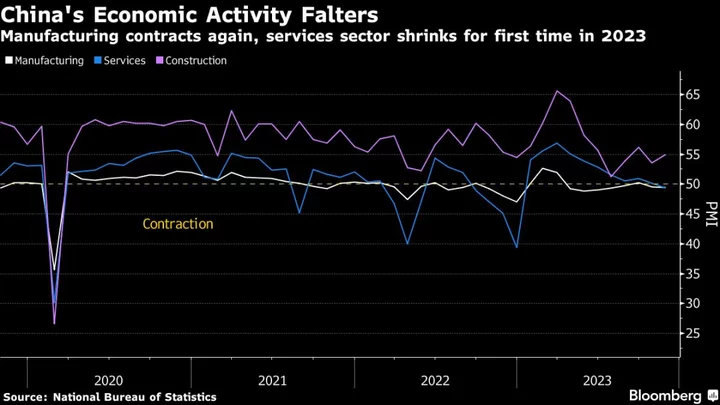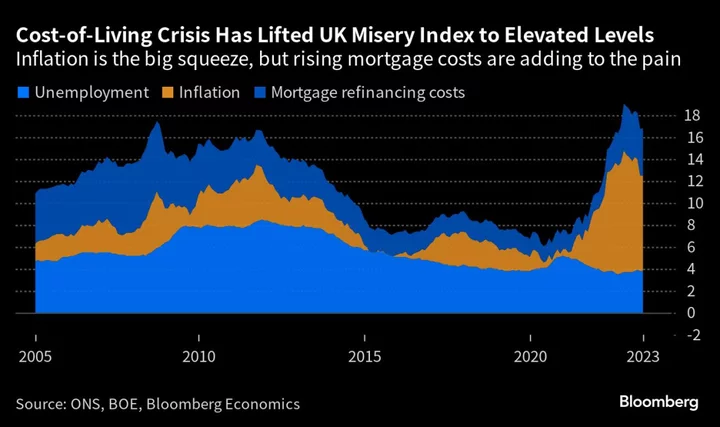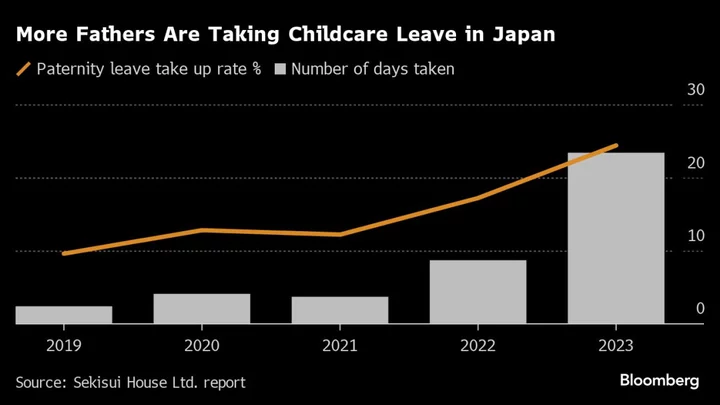Activity in China’s manufacturing and services sectors shrank in November, adding to expectations for additional government support for the economic recovery as it struggles to regain steam.
The official manufacturing purchasing managers index fell to 49.4, the second straight month of contraction, according to a Thursday statement from the National Bureau of Statistics. While economists expected a decline in the index, the number was lower than estimates.
A gauge of non-manufacturing activity — which measures the construction and services sectors — unexpectedly eased to 50.2, barely clearing the 50 mark above which indicates expansion. An underlying measure of services activity fell to 49.3, the first contraction for that gauge this year.
“Today’s PMI reading will further raise the expectations toward policy support,” said Zhou Hao, chief economist at Guotai Junan International in Hong Kong. “Fiscal policy will be under the spotlight and takes the center stage over the coming year.”
China’s benchmark CSI 300 Index swung between gains and losses in early trading on Thursday. The gauge is close to hitting a fresh 2023 low as investors remain concerned about the economic outlook. The yuan traded offshore also fluctuated after the data.
The world’s second-largest economy is still on track to reach an official growth goal of around 5% for 2023, but questions remain about its ability to sustain momentum headed into next year.
The property sector remains a key threat to growth. Falling home sales have curbed demand for everything from furniture to decorations and home appliances. The nation’s rebound in services — a key recovery driver earlier this year — has been tapering off. A gloomy job market has also kept consumers cautious about spending more.
The government has in recent months worked to support activity by ramping up bond sales for infrastructure investment. A gauge of construction activity rose in November to 55 from 53.5 the prior month, the NBS data showed.
“China’s economic activity continued to stabilize, but the pace slowed,” senior NBS analyst Zhao Qinghe said in a statement accompanying the data. “The recovery foundation still needs to be consolidated.”
While many economists expected factory activity to shrink in November, the decline was still “particularly disappointing,” according to Michelle Lam, greater China economist at Societe Generale SA in Hong Kong.
“That shows that the recovery in private demand remains very fragile, while the government’s stimulus has yet to show up on data,” she said.
--With assistance from Yujing Liu, Zhu Lin and Iris Ouyang.
(Updates with additional details and commentary.)









